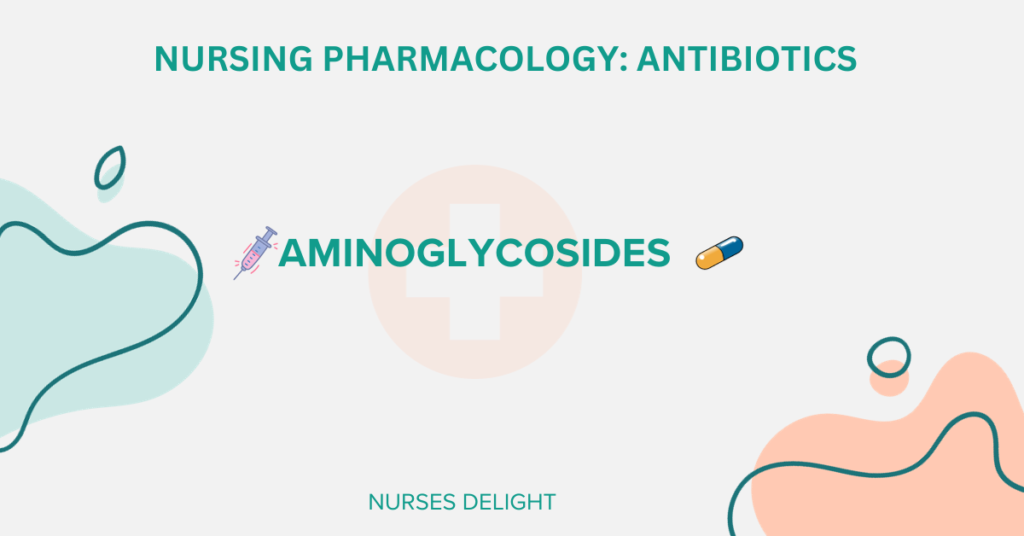Tetracyclines are bacteriostatic antibiotics. They include;
- Tetracycline
- Doxycycline
- Demeclocycline
- Minocycline
Pregnancy Category: D
Tetracyclines are toxic to the fetus and also cause teeth damage in infants.
Mechanism of Action
They are bacteriostatic. They prevent the replication of susceptible bacteria cells by inhibiting protein synthesis.
Pharmacokinetics
- Absorption: They are adequately absorbed following oral ingestion. Administration with dairy products containing calcium and magnesium, iron supplements, and aluminum antacids decrease absorption, especially for tetracycline. This is because they form chelates that are non-absorbable.
- Distribution: Tetracyclines penetrate adequately into most body fluids. They concentrate well on the bile, liver, kidney, gingival fluid, and skin. They bind to calcifying tissues such as teeth and bones or high calcium-containing tumors. Only doxycycline and minocycline achieve therapeutic levels in the cerebrospinal fluid. All tetracyclines cross the placenta and concentrate in fetal bones and dentition.
- Elimination: Tetracycline and doxycycline are not metabolized in the liver. Tetracycline is eliminated unchanged through urine. Minocycline is metabolized in the liver and eliminated via the kidney. Doxycycline is primarily eliminated through the bile in the feces, thus preferred in renally compromised patients.
Indications
- Treatment of infections caused by rickettsia, Brucella, Escherichia coli, Escherichia aerogenes, Shigella, Acinetobacter calcoaceticus, Haemophilus influenzae, Staphylococcus aureus, Diplococcus pneumonia, Neisseria gonorrhoeae, Listeria monocytogenes, Treponema pallidum, Treponema pertenue, Clostridium, Bacillus anthracis, Actinomyces, Fusobacterium fusiforme, Neisseria meningitides, and Chlamydia trachomatis
- Treatment of Klebsiella species when penicillins are contraindicated
- Adjunct to amebicides in acute intestinal amebiasis
- Prophylaxis of malaria
- Treatment of acne
- Treatment of superficial ocular infections caused by susceptible bacteria
- Prophylaxis of ophthalmia neonatorum caused by gonorrhoeae or C. trachomatis
- Unlabeled uses: Lyme disease, endocarditis, facial nerve paralysis, arthritis, early syphilis, PID, epididymitis, prophylaxis after sexual assault
Cautions and Contraindications
- Use cautiously in patients with hepatic or renal impairment; ocular viral, mycobacterial, or fungal infections.
- Contraindicated in patients allergic to tetracyclines, and tartrazine; pregnancy, and lactation
Adverse Effects
- Dermatologic: Exfoliative dermatitis phototoxic reactions, rash
- GI: Discoloration and weakness of primary teeth in a fetus, fatty liver, hepatic failure, anorexia,
nausea, vomiting, diarrhea, glossitis, dysphagia, enterocolitis, and esophageal ulcers. - Hematologic: Hemolytic anemia, thrombocytopenia, neutropenia, eosinophilia, leukocytosis, leukopenia
- Hypersensitivity: Urticaria, anaphylaxis
- Local: Transient irritation, stinging, itching, angioneurotic edema, urticaria, dermatitis, superinfections with ophthalmic or dermatologic use
- Other: Superinfections, local irritation, and pain at parenteral injection sites
Interactions
- Decreased absorption with food, calcium salts, magnesium salts, zinc salts, aluminum salts, bismuth salts, iron, urine alkalinizers, dairy products, and charcoal
- Increases digoxin toxicity
- Decreases the effectiveness of hormonal contraceptives.
- Decreases the activity of penicillins
Nursing Implications
Assessment
- Assess for allergies to any of the tetracyclines and/or tartrazine
- Assess for hepatic or renal impairment, pregnancy, lactation
- Assess for ocular viral, mycobacterial, or fungal infections
- Assess the site of infection, skin color, lesions; respiratory adventitious sounds; bowel sounds, output, liver evaluation; urinalysis, BUN, LFTs, and renal function tests
Interventions
- Administer oral medication on an empty stomach, 1 hour before or 2–3 hours after meals.
- Do not give with antacids. If antacids must be used, give them 3 hours after the dose of tetracycline.
- Obtain culture from the infected area prior to drug therapy.
- Avoid using outdated drugs since degraded drugs are highly nephrotoxic.
- Provide frequent hygiene measures if superinfections occur.
- Protect patient from sunlight and bright lights if photosensitivity occurs
- Arrange for regular renal function tests if long-term therapy is used.
- Use topical preparations of these drugs only when clearly indicated.
Patient/Family Teaching
Systemic administration
- These drugs should be taken on an empty stomach, 1 hour before or 2–3 hours after meals, with a full glass of water. Do not take these drugs with food, dairy products, iron preparations, or antacids.
- Take the full course of therapy prescribed; if any drug is left, discard it immediately. Never take an outdated product.
- Pregnancy may occur when taking tetracycline with hormonal contraceptives. To be sure of avoiding pregnancy, use an additional type of contraceptive while using this drug.
- Report severe cramps, watery diarrhea, rash or itching, difficulty breathing, dark urine or light-colored stools, and yellowing of the skin or eyes.
Eyedrop administration
- To administer the eyedrops: Lie down or tilt your head backward and look at the ceiling. Drop the suspension drug inside your lower eyelid while looking up. Close your eye, and apply gentle pressure to the inner corner of the eye for 1 minute.
- Apply ointment inside the lower eyelid; close your eyes, and roll your eyeball in all directions.
- These drugs may cause temporary blurring of vision or stinging after application.
- Notify your healthcare provider if stinging or itching becomes severe.
- Take the full course of therapy prescribed and discard any leftover medication.
- Apply dermatologic solution until the skin is wet; avoid using it on the eyes, nose, and mouth.
Topical administration
- You may experience transient stinging or burning; this will subside quickly; skin in the treated area may become yellow; this will wash off.
- Use cosmetics as you usually do.
- Wash the area before applying (unless contraindicated); this drug may stain clothing.
References
- Karch M. (2014). Lippincott’s Nursing Drug Guide. Wolter’s Kluwer/Lippincott Williams and Wilkins. New York, USA.
- Vallerand A., Sanoski C., Deglin J. (2015). Davis’s Drug Guide for Nurses (14th Ed). F.A Davis Company. Philadelphia, Pennsylvania, USA.
- Whalen K., Finkel R., Panavelil T. (2015). Lippincott Illustrated Reviews Pharmacology (6th Ed). Wolter’s Kluwer. USA.




Ηelpfսl info. Lucky me I discovered your web site accidentally, and I am surprised why this accident didn’t happened in advаnce!
I bookmarked it.
Thank you. I hope you’ll find it useful.